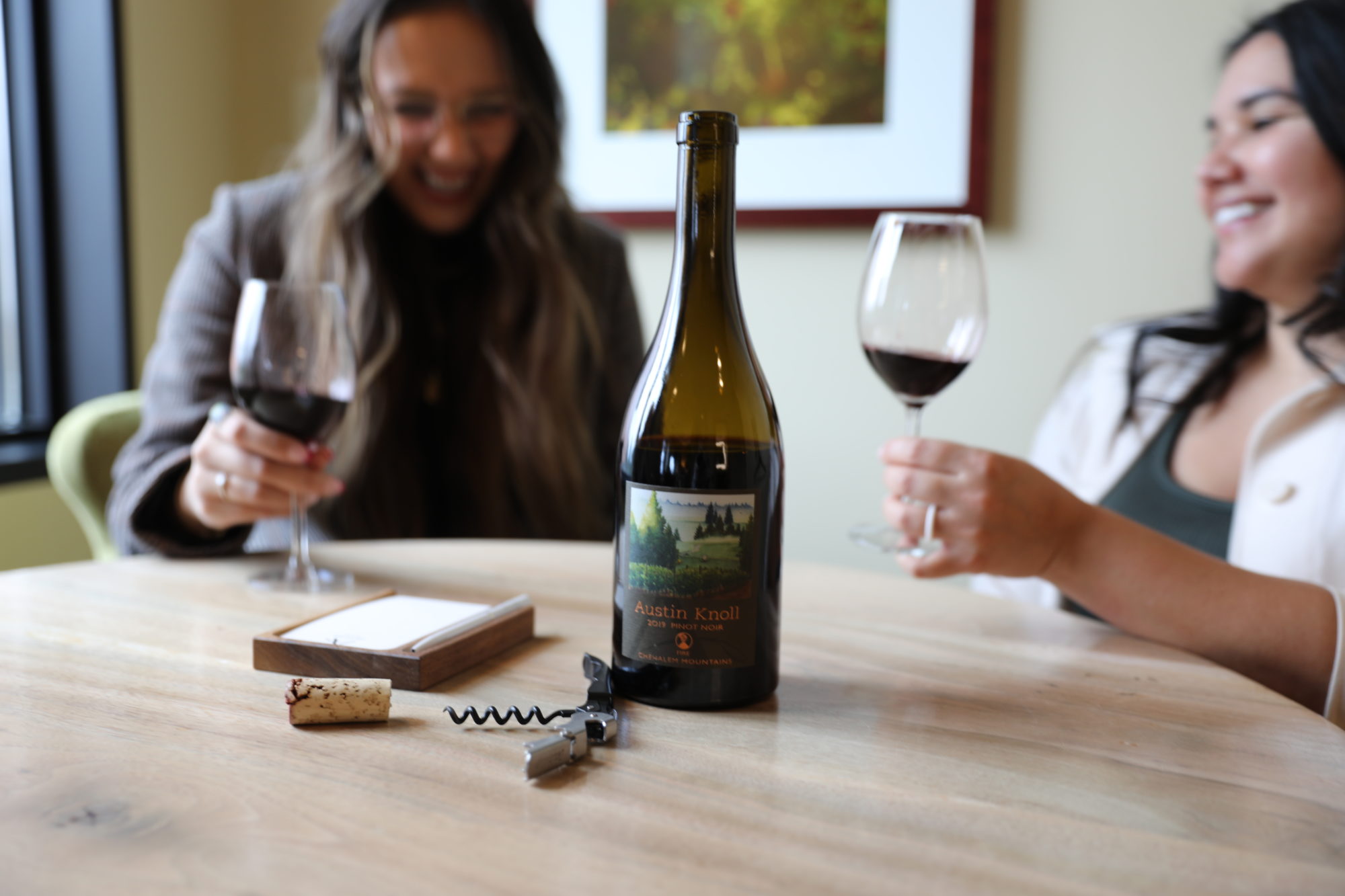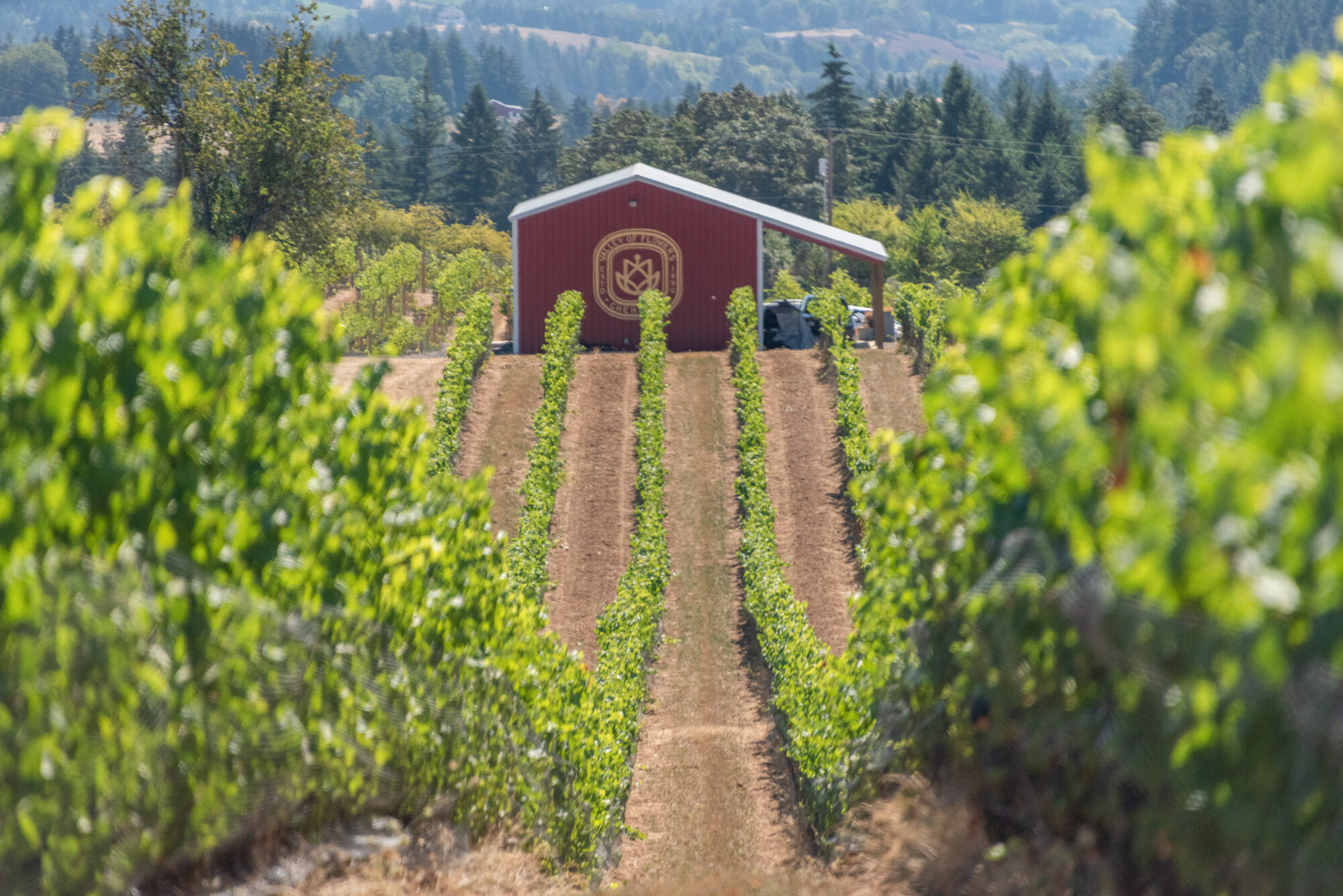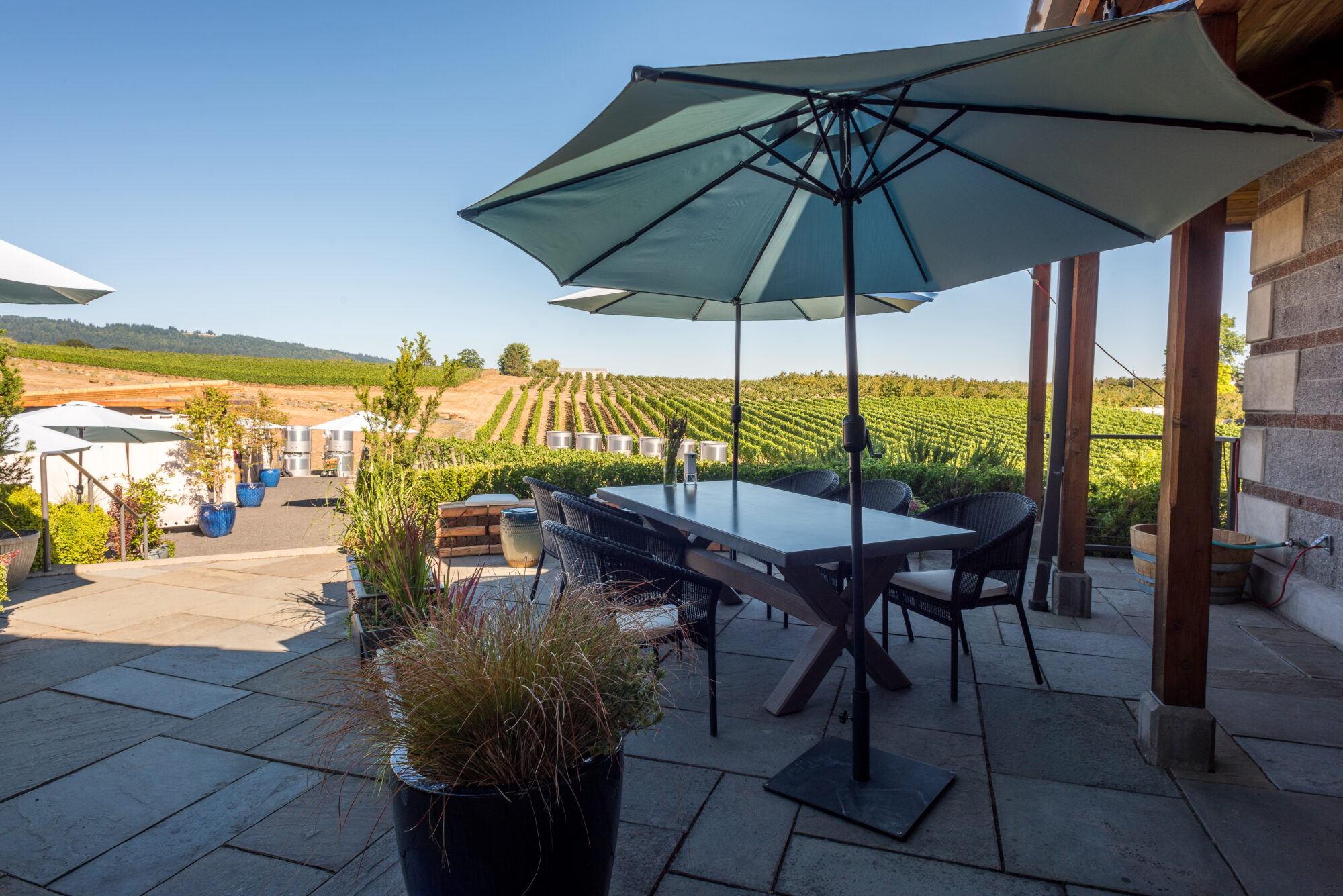Welcome to Oregon Pinot Country
In the 1960s, the first wine pioneers planted Pinot Noir grapes in the Willamette Valley, recognizing that it has abundant similarities to France’s Burgundy (the legendary growing region of French Pinot Noir). In 1980, that first winemaker, David Lett of the Eyrie Vineyards, brought his Oregon Pinot to the “wine olympics” in Paris, and won second place over many famous French wines. That competition put the Willamette Valley on the global wine map, and kicked off a thriving industry which you can experience today. Twelve distinct AVAs (American Viticulture Areas) comprise the Willamette Valley wine region, which is now home to about 700 winery tasting rooms – most producing Pinot Noir.

It’s All About Terroir
You’ll hear a lot about terroir while tasting in the valley, because that’s what makes the wines here so special. There are three main soil types: volcanic (specifically Jory soil, which predominates vineyards in the Dundee Hills), sedimentary (Willakenzie soil is a hallmark of Ribbon Ridge and Yamhill-Carlton vineyards), and loess (LaurelWood soil, which is found in the Chehalem Mountains, along with the other two types). These soils impart “terroir” into the wine, which is expressed in its appearance and flavor in your glass. For example, many recognize the wines grown in Jory soil to have notes of minerality and bright red fruit, while Willakenzie soils often produce wines with darker berry and cola aromas. It’s fun to taste a flight featuring bottles from the same winery but different vineyards, so you can experience the amazing difference made just by planting the same vine in two different soils! These variations provide nuance that are also combined into blended wines that suit a winery’s preferred style.

World Class Wines
The Willamette Valley boasts an “embarrassment of riches:” so much great wine in a relatively small area. How do you narrow it down to a list to try in a week or a weekend? Start in Newberg, with some of the early pioneers and new wineries making a splash on the national wine stage. The most historic winery in this area is Adelsheim, the first winery established in the Chehalem Mountains crafting exceptional wines on their estate for almost 50 years. Chehalem Winery, whose founder planted the first vineyard on Ribbon Ridge, offers tastings in their stylish tasting room in downtown Newberg (one of 5 tasting rooms within walking distance). REX HILL, founded in 1982, hosts guests in a gorgeous modern glass tasting room overlooking their vineyard. New tasting rooms from Nicolas Jay and Sequitur have impressed guests and critics with their hospitality programs and highly rated wines right out of the gate.

Not Just Pinot
While Pinot Noir finds an ideal growing environment in the Willamette Valley, winegrowers are also planting Gamay Noir and Syrah for their bottlings. Gamay Noir is the grape known best for making France’s Beaujolais. It produces a beautiful red wine that tends to be a bit lighter than Pinot Noir, but with balanced acidity and berry aromas. Brick House Wines has been making exceptional Gamay for decades, while Hazelfern and Ribbon Ridge Winery have recently added Gamay to their wine lineups. Syrah is a richer, darker red wine than Pinot, and two rare wineries producing it from grapes grown here in the Willamette Valley are Compris Vineyard and Bergström. Many wineries in the area also craft bottlings of warmer climate red varietals such as Cabernet Franc, Cabernet Sauvignon, and Syrah made from grapes sourced from elsewhere in Oregon and Washington. There are so many delicious wines to explore in and around Newberg – that’s why we like to call it “a University for the Senses.”